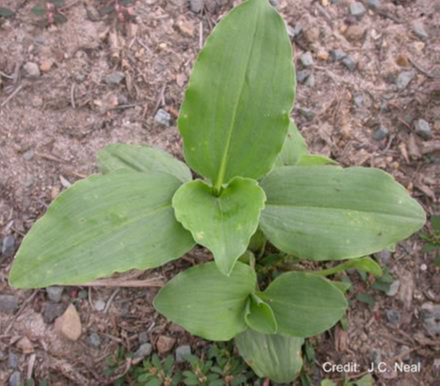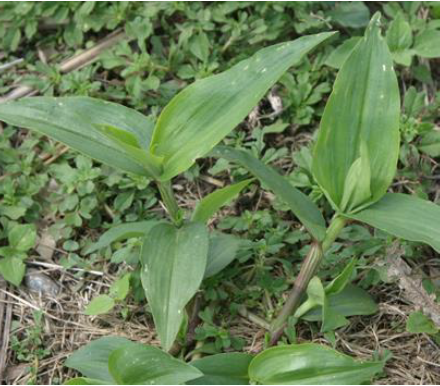The North Carolina Department of Agriculture and Consumer Services – Plant Industry Division is encouraging farmers statewide to inspect their fields for the presence of tropical spiderwort (Commelina benghalensis). The aggressive, invasive weed is recognized by the USDA as one of the world’s most troublesome and was recently discovered in eastern North Carolina.
Late June, tropical spiderwort was found in a cotton field in Craven County along the Neuse River. Eradication efforts are underway. Although tropical spiderwort is most likely to be found in eastern North Carolina, the weed could establish in most of the state. This invasive species poses a serious threat to over 20 economically important crops, including soybeans and cotton.
Also known as Benghal dayflower, tropical spiderwort was first detected in the United States in Florida in 1928 and has since spread to Alabama, California, Georgia, Hawaii, Louisiana and Mississippi. Although sporadic infestations have been reported in North Carolina, eradication efforts to date have been effective, and officials are calling on growers to help maintain that success.
“Farmers have a unique opportunity to detect and eliminate a difficult-to-control weed before it becomes a widespread and costly issue,” said Dr. Bill Foote, director of the Plant Industry Division.
Tropical spiderwort closely resembles several native dayflower species commonly found in North Carolina, which can make identification challenging. There are several ways to identify tropical spiderwort, including red hairs on leaf sheaths and the presence of underground flower structures. The easiest way to differentiate this plant from other easily confused species is through its leaves as pictured below.


The weed can be introduced into fields via floodwaters, migratory birds, or contaminated equipment and vehicles transported from infested areas. It thrives in a range of soil types but prefers full sun and moist, fertile conditions.
“Farmers are our first line of defense in the fight against tropical spiderwort. We need their help to detect and eliminate new infestations before they become established. If left unchecked, the cost and difficulty of control will rise dramatically over time,” Foote said.
If you suspect the presence of tropical spiderwort in your fields, contact your local county extension office immediately for assistance and verification: www.ces.ncsu.edu.
